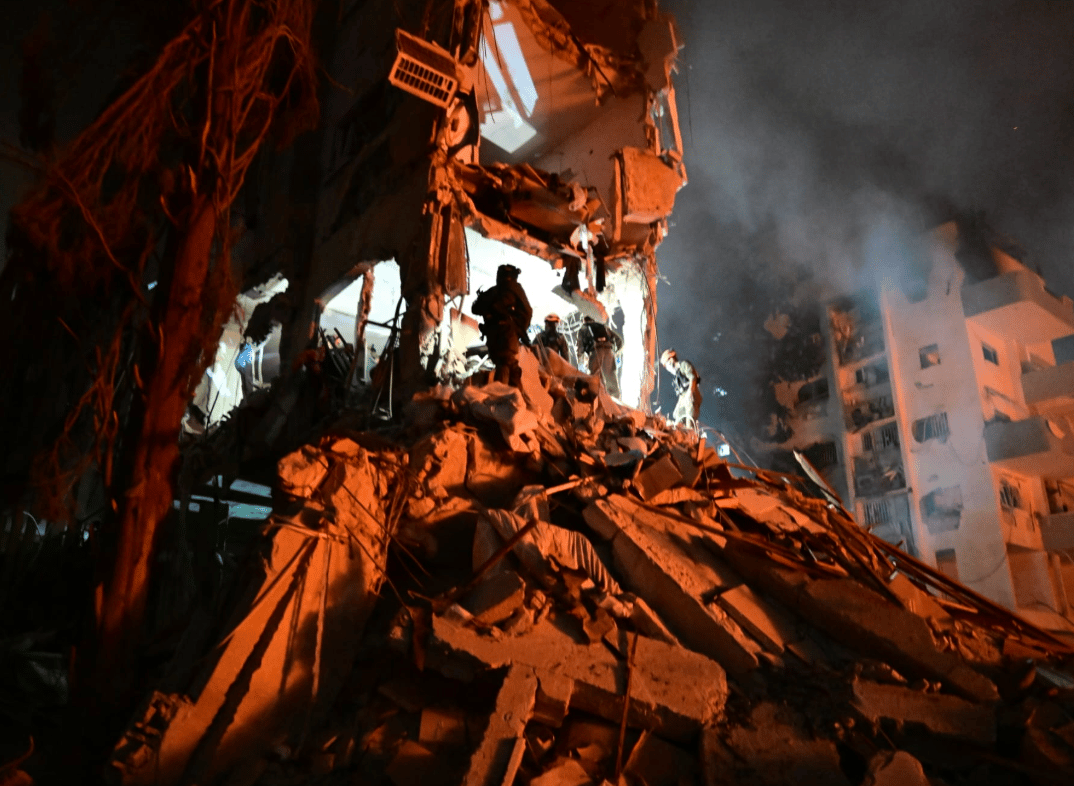Flames, rubble, resolve—Rehovot stands shaken.
Rehovot survivor pulled from the rubble after devastating Iranian strike
An Iranian ballistic missile struck Rehovot on Saturday night, damaging Israel's top research center and injuring dozens. As IDF rescue units pull survivors from rubble, officials warn of difficult days ahead amid rising fears of regional war.

Lats nigt (Saturday night), Rehovot, a city 20 kilometers south of Tel Aviv, was struck by an Iranian ballistic missile as part of a retaliatory barrage targeting Israel. The attack, which followed Israel’s strikes on Iranian nuclear and military targets, caused significant destruction and prompted extensive rescue operations.
Maj. Gen. Rafi Milo, chief of the IDF Home Front Command, announced that a survivor was successfully rescued from the rubble of a collapsed building in Rehovot. Milo emphasized the critical need to adhere to safety protocols, stating, “This is a reminder how important it is to follow the Home Front Command guidelines.” He added, “Difficult days lie ahead, but we are determined. We have the spirit, the strength to act together with you to protect you and continue saving lives.”
Details of the Rehovot Strike and Rescue Efforts
The missile strike in Rehovot caused severe damage, including to a research center at the Weizmann Institute of Science, a prominent Israeli university. The institute’s cancer research center sustained heavy destruction, with reports of a fire engulfing at least one building containing laboratories.
Alan Monziani, a 31-year-old Ph.D. student from Italy residing in a dorm at the institute, described the scene: “One side of the cancer research center was missing most of its walls, it was hard to tell whether it took a direct hit or was struck by shrapnel, because it was engulfed in flames.” The attack was followed by increased security presence around the institute and a strong odor emanating from the facility, suggesting possible chemical or material damage, though these claims remain unverified.
Magen David Adom (MDA), Israel’s national emergency service, reported at least 28 people injured in Rehovot, with two in serious condition and seven in moderate condition. Across Rehovot and nearby Bat Yam, a total of 93 injuries were recorded, with one fatality in Bat Yam, a woman in her sixties. Earlier reports indicated 20 injuries in the two cities, with one post on X claiming three critical, 12 moderate, and 23 light injuries, though these figures are unconfirmed. MDA treated 140 victims nationwide, with six in critical condition, 19 in moderate condition, and 111 stable.
The IDF’s elite search-and-rescue unit, supported by over 50 battalions and approximately 30,000 soldiers, was deployed to Rehovot and other affected areas. Rescue operations focused on scanning for individuals trapped under debris, with fears of structural collapse complicating efforts.
In Rehovot, firefighters and first responders worked amidst extensive destruction, with videos showing emergency crews digging through rubble. The Home Front Command estimated that clearing the Bat Yam impact site, where a multi-story building was partially collapsed, would take at least a day, indicating the scale of the challenge in Rehovot as well.
The Rehovot strike, alongside attacks on other cities, has intensified fears of a broader regional conflict. Israel’s airspace remains closed, stranding thousands of citizens abroad, with the Civil Aviation Authority estimating weeks before normal operations resume. Iran’s Supreme Leader Ayatollah Ali Khamenei vowed a “crushing response,” while Israeli Prime Minister Benjamin Netanyahu warned of further strikes, stating, “More is on the way.”